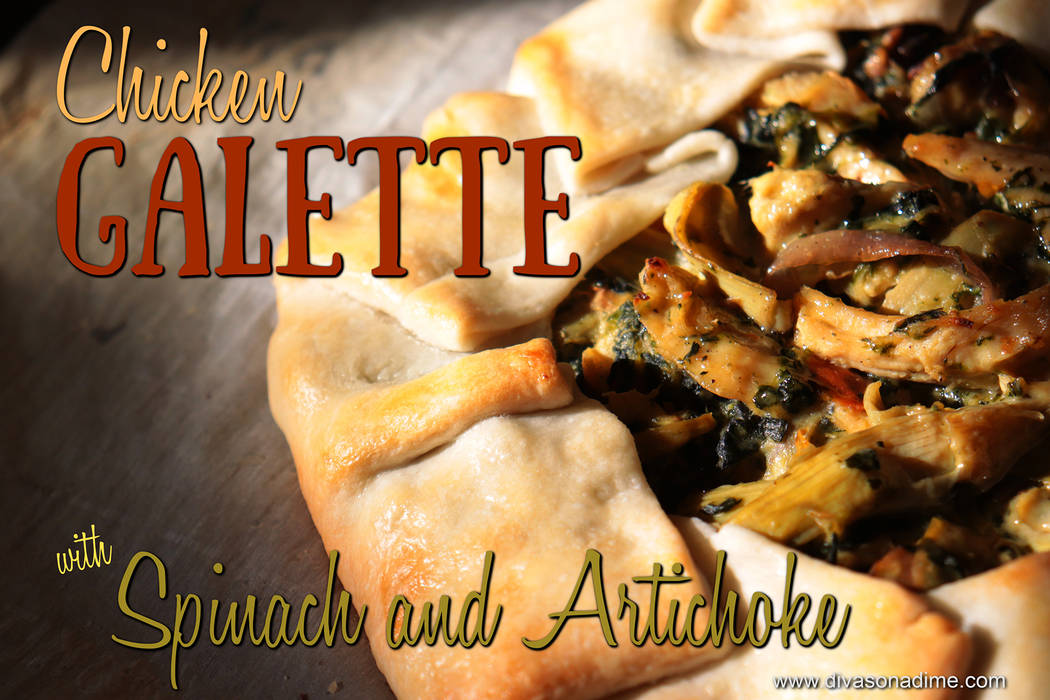Give leftovers new life with easy technique
To keep our grocery budgets on track we need to consume all the food we purchase with as little waste as possible. This means eating leftovers. They’re a fact of life. However, serving the same thing a second time can feel a little boring. Sometimes it’s helpful to totally reinvent leftovers to make them more enticing.
Here’s a fun way to instantly up your leftover game. We’re going to fill a pie crust with your suppertime surplus, making an elegantly rustic pot pie. But because we’re divas, we’re going to put on our fancy pants and call this a galette.
In French, “galette” is a term used to describe various free-form pies made with only a bottom crust. Traditionally, these can be sweet or savory, often filled with eggs, vegetables or fruit. A galette is a perfect way to creatively use up leftovers, like all the little bits and pieces in the fridge.
A standard (9-inch) pie crust holds between two and three cups of filling and yields two main dish servings or four lunch-sized servings. Extra diva points if you make your own pastry but taking a shortcut by purchasing ready-made pie crusts is perfectly fine.
This is more of a “technique” than a recipe, because anything goes as far as your filling is concerned.
When choosing leftovers to put in your galette, aim for two to three cups of filling dividing between protein (like cooked, shredded or chopped chicken, pork, beef or beans) and cooked vegetables. If you wish, you can add some starch like cooked potato or rice. Of course, cheese goes with everything. As long as you total two to three cups, you can get as creative as you desire.
Begin by heating the leftovers in a skillet to combine the flavors. If you’re adding items that need to be cooked, like chopped onion, cook them before adding the leftovers. Consider adding sauces (like sweet pepper sauce, barbecue, Alfredo, marinara or teriyaki) or condiments (mustard, olives, chopped pickles or marinated peppers), if appropriate.
If you’d like to include a thickened creamy sauce (and you do), here’s how to make a béchamel sauce right in the pan. If your filling has a bit of fat from the leftovers you chose, you’re probably good as you are. If it’s on the dry side, add a tablespoon of fat (such as butter, olive oil, vegetable oil, coconut oil) and stir to distribute. Sprinkle the heated filling with ¼ cup flour, stirring to evenly distribute. Cook this while stirring for two minutes to cook the flour. Add 1 cup liquid (milk, half and half, cream or broth) and stir like crazy to mix it together. It will thicken as the liquid comes to a simmer.
When your filling is prepared, set aside to cool. Meanwhile, preheat the oven to 400 F. Roll your pastry into a round on a piece of parchment paper. Place the filling in the center, leaving about 3 inches border on the sides. Pull the sides of the pastry up over the filling, pinching at intervals to secure the pastry. Place the pastry along with the parchment onto a baking sheet and bake for 15 to 20 minutes or until crust is golden.
The combination in the photo is leftover sautéed purple onion, a few sliced mushrooms with shredded chicken breast, one can artichoke hearts and chopped spinach. I made the cream sauce as shown above with a handful of Parmesan cheese. It was divine, but since I just threw leftovers in the skillet, it’ll never be the same again. And that’s exactly as it should be.
See you next week.
Lifestyle expert Patti Diamond is a recipe developer and food writer of the website “Divas On A Dime – Where Frugal, Meets Fabulous!” Visit Patti at www.divasonadime.com and join the conversation on Facebook at DivasOnADimeDotCom. Email Patti at divapatti@divasonadime.com.











